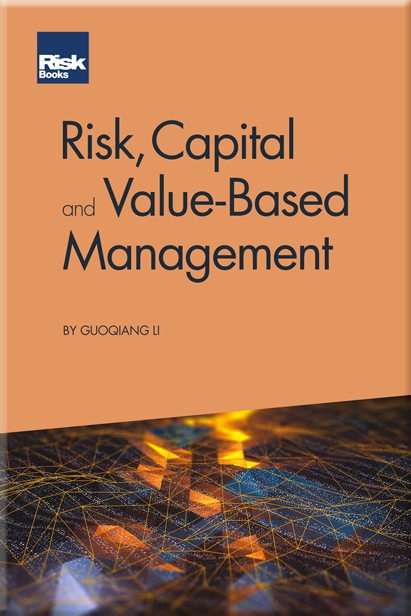Risk, Capital & Value-Based Management
Risk, Capital & Value-Based Management
Guoqiang Li
Couldn't load pickup availability
This comprehensive reference, Risk, Capital and Value-based Management, written by industry veteran Guoqiang Li is the result of years of the author's writing, decades of work, dozens of initiatives implemented, and lessons learned.
Teeming with many real-life examples and case studies this book will help readers develop their own specific and actionable plans to improve their organisation’s risk and capital management practices while offering readers ideas about how to avoid risk-management pitfalls suffered by other organisations.
Written by a practitioner for practitioners, Li lays out for the reader novel approaches to the mature yet continuously evolving topic of risk management within financial services, with a specific focus on the insurance industry.
One new approach Li takes in this book is to integrate risk management, capital management, and value-based management, which are often treated as separate topics. Value-based management is a philosophy popular with bank and insurance company senior management teams. Within the value-based management framework, risk management and capital management are two foundational pillars, as value creation is driven by risk, profitability, and growth.
The second new angle is the integration, comparison, and contrast of internal considerations with external stakeholders’ expectations and requirements. Two important groups of external stakeholders are covered: regulators and rating agencies, both of which are critical for companies operating in the financial services sector.
The book is broken down into three parts:
Part I provides an overview of value-based management philosophies, strategies and best practices and sets out two related subjects, risk management and capital management, as the critical foundation for successful value-based management.
Part II investigates risk management best practices and new developments since the 2007–9 global financial crisis, covering credit risk, market risk, property and casualty (P&C) insurance risk, life insurance risk and operational risk for the global insurance industry.
Part III focuses on capital management and various capital models, starting with internal capital or economic capital, followed by regulation and regulatory capital, and concluding with ratings and rating agency capital.
The management of financial institutions is a complex and evolving endeavour. For readers, who analyse and report, this is a suite of technical toolkits, and for executives who oversee, execute, and manage, this will serve as a good source of ideas to lead their organisation to better performance.
Share

More information
About the Author
Table of contents
Chapter No
List of Figures
List of Tables
About the Author
1 Introduction
PART I VALUE-BASED MANAGEMENT
2 Value-based management
PART II RISK MANAGEMENT
3 The risk management and capital management frameworks
4 Credit risk measurement and management
5 Market risk measurement and management
6 Property and casualty insurance risk measurement and management
7 Life insurance risk measurement and management
8 Operational risk measurement and management
PART III CAPITAL MANAGEMENT AND CAPITAL MODELS
9 Economic capital
10 Regulation and regulatory capital
11 Ratings and rating agency capital
12 Conclusion: looking backwards and forwards
Glossary
Acknowledgements

